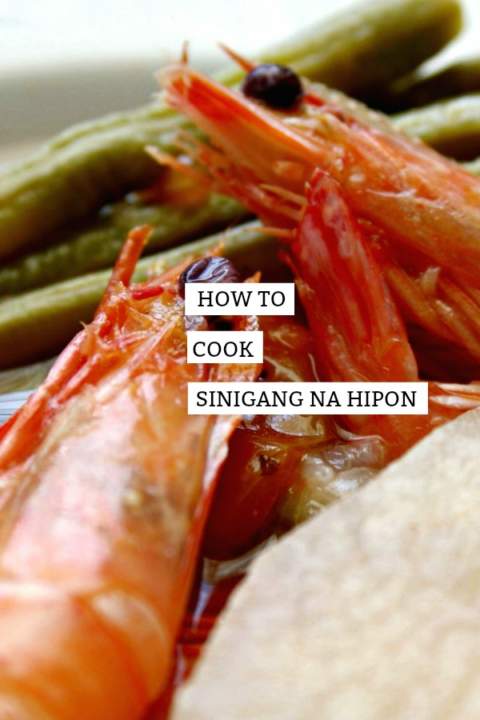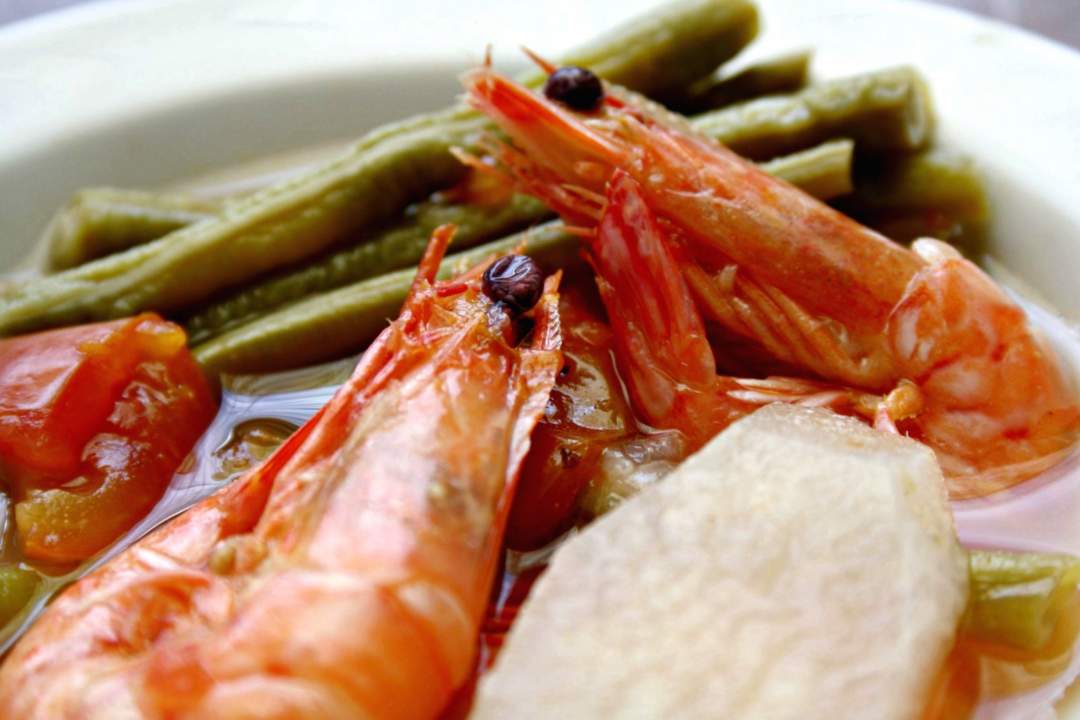How to cook Sinigang na Hipon
It’s been a rainy couple of days and it’s sooo cold! The first day, we were having fun and did a movie marathon for Halloween. But now, one of the kids is not feeling well, my ear ache is back, and the hubby’s back pain is back with a vengeance. Everyone is on edge. Needless to say, any kind of sinigang is a welcome dish today.
Since it’s a #Fridayfast and #nomeatfriday, I decided to share this Sinigang na Hipon Recipe (Shrimp Sinigang Recipe) today. The shrimp makes it extra special!
This Sinigang Recipe with shrimp and gabi is a classic Filipino dish that is loved for its sour and savory flavors. This soup is made with shrimp, vegetables, and gabi or taro root, Sinigang na Hipon owes its distinctive tang to tamarind making it not only sour but creamy as well. You can also use just tomatoes or kamias fruit, making for a sour delicious and healthy meal.
Nowadays, any sinigang recipe is very easy to cook with Sinigang mix but when I was a kid, we had to use real tamarind and we have this giant tamarind in our backyard. My mom would ask me to climb it to get the mature tamarind fruits, and we also use the very young tamarind leaves for the soup. It’s not really different from this Shrimp Sinigang Recipe, except that the first step is to boil the tamarind and mash it after to remove the seeds. The remaining fruit concentrate is then used as the souring agent.
Nostalgia aside, I find that using food mixes makes it easier for moms to serve delicious foods to the family quickly and easily. Food mixes often come with pre-measured ingredients and easy-to-follow instructions, which can save time and effort in the kitchen. This can be especially helpful for busy moms who may not have a lot of time to devote to meal preparation. In addition, food mixes can help to ensure consistent results, even for those who may not have a lot of cooking experience. This can be especially helpful for moms who are just starting out in the kitchen, or for those who may not have a lot of experience with a particular type of cuisine.
So anyway, back to our Sinigang na Hipon recipe, this one comes with Gabi (taro). The heart of Sinigang lies in its broth. Crafting the perfect balance of sourness and richness is the secret to Sinigang na hipon’s soul-soothing magic. I love this version because the taro gives a slightly thicker soup to the usual clear Sinigang broth. If you use the Sinigang mix with gabi, it also gives that same soup even if you don’t have gabi at the time of cooking.
Sinigang na Hipon Vegetable Ensemble
Sinigang is not just about shrimp; it’s also a vegetable ensemble that contribute to Sinigang’s burst of flavors and varied textures. In our recipe we use radish, eggplant, sitaw, and kangkong. Radish is essential in my opinion but for all the other veggies, you can mix and match whatever is available on your pantry. Sometimes I use pechay instead of kangkong, or mustasa if youre up for its taste which is a bit bitter (we actually use mustasa for the Sinigang sa miso instead).
How to cook Sinigang na Hipon (Shrimp Sinigang Recipe)
Ingredients:
- 1 liter water
- 2 pcs medium tomatoes, cut into quarters
- 1 pc medium onion, cut into quarters
- 2 pcs siling pansigang (finger chili)
- 2 pcs gabi (taro), cut in quarters (optional)
- 1 pc small radish, sliced on an angle
- 1 small eggplant cut on angle
- 4 pcs sitaw, cut into 2 ½ inches
- 1/2 kg prawns, trimmed
- 1 pack Sinigang Mix small (22 gms) of your preference
- 2 bundles kangkong, leaves and tender stems picked
Instructions for Sinigang Recipe:
- Bring water to boil and add tomatoes, gabi, onion and siling pansigang. Simmer for 15 minutes.
- Add hard vegetables such as radish and sitaw and cook for 2 minutes.
- Add shrimp and simmer until it turns pink/ orange (about 1+ minute). Do not over cook.
- Add sinigang mix.
- Add Kangkong and turn off heat.
- Serve immediately.

Sinigang na Hipon Frequently Asked Questions (FAQs)
Q1: Can I use other seafood in Sinigang besides shrimp?
Certainly! While shrimp is traditional, Sinigang is versatile. Feel free to experiment with other seafood like fish or prawns.
Q2: Is Sinigang a challenging dish to prepare for beginners?
Not at all. Sinigang na Hipon is beginner-friendly. Follow our step-by-step guide, and you’ll master it in no time.
Q3: Can I use a Sinigang mix instead of fresh tamarind for convenience?
Yes, you definitely can. Of course, using fresh tamarind adds a unique depth of flavor and it’s worth the effort but don’t stress if you don’t have access to fresh tamarind!
Q4: Are there vegetarian versions of Sinigang?
Absolutely! Substitute shrimp with tofu or mushrooms for a delightful vegetarian Sinigang experience.
Q5: What side dishes pair well with Sinigang na Hipon?
Sinigang complements well with steamed rice, fish sauce with calamansi, and a side of sautéed greens.
Looking for other ways to have sinigang aside from this shrimp sinigang recipe? I have the regular Pork Sinigang but we love Sinigang so much that we have it even in non soup form! Check out my Grilled Sinigang Pork Chops with Sinigang Mix Rub, and even Sinigang Rice!

